
Duke William of Württemberg was an Austrian and Württemberg General.

William I was King of Württemberg from 30 October 1816 until his death.

Charles was King of Württemberg from 25 June 1864 until his death in 1891. Charles I married Grand Duchess Olga Nikolaevna of Russia in 1846 and ascended to the throne in 1864. Despite their marriage, the couple had no children, likely due to Charles' homosexuality. Charles was involved in several scandals, including a close relationship with American Charles Woodcock. In 1870, the couple adopted Olga's niece, Vera Konstantinovna. Charles I aligned with Austria during the Austro-Prussian War but later sided with Prussia in the Franco-Prussian War, joining the new German Empire in 1870. He died childless and was succeeded by his sister's son, William II.
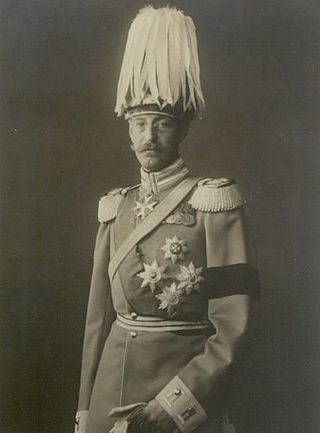
Prince Wilhelm of Urach, Count of Württemberg, 2nd Duke of Urach, was a German prince who was elected in June 1918 as King of Lithuania, with the regnal name of Mindaugas II. He never assumed the crown, however, as German authorities declared the election invalid; the invitation was withdrawn in November 1918. From 17 July 1869 until his death, he was the head of the morganatic Urach branch of the House of Württemberg.
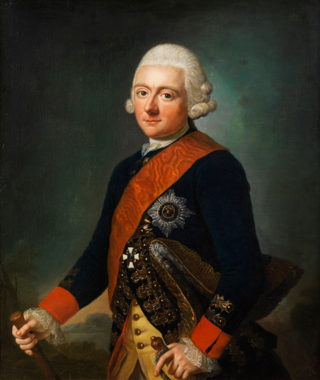
Friedrich Eugen, Duke of Württemberg was the fourth son of Karl Alexander, Duke of Württemberg, and Princess Maria Augusta of Thurn and Taxis. He was born in Stuttgart. From 1795 until 1797 he was Duke of Württemberg.

Count Friedrich Wilhelm Alexander Ferdinand of Württemberg, 1st Duke of Urach, was the son of Duke Wilhelm of Württemberg (1761–1830), younger brother of King Frederick I of Württemberg, by his morganatic wife, Baroness Wilhelmine von Tunderfeldt-Rhodis (1777–1822), who had married in 1800. He was the first Head of the House of Urach.

Lichtenstein Castle is a privately owned Gothic Revival castle located in the Swabian Jura of southern Germany. It was designed by Carl Alexander Heideloff and its name means "shining stone" or "bright stone". The castle overlooks the Echaz valley near Honau, Reutlingen in the state of Baden-Württemberg. The modern castle was inspired by Wilhelm Hauff's 1826 novel Lichtenstein and was built in 1840–1842. The ruins of an older medieval castle are a few hundred meters away.

The title of Duke of Urach was created in the Kingdom of Württemberg on 28 March 1867 for Friedrich Wilhelm Alexander Ferdinand, Count of Württemberg, with the style of Serene Highness. The first Duke of Urach was the first head of the House of Urach.

The House of Württemberg is a German dynasty and former royal family from Württemberg.
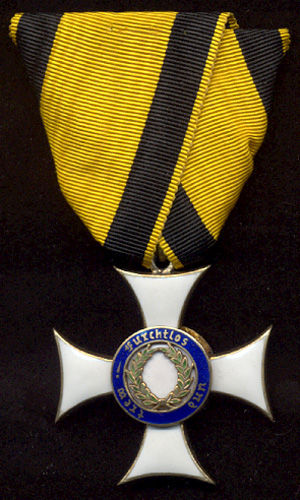
The Military Merit Order (Militärverdienstorden) was a military order of the Kingdom of Württemberg, which joined the German Empire in 1871. The order was one of the older military orders of the states of the German Empire. It was founded on 11 February 1759 by Karl Eugen, Duke of Württemberg as the Militär-Carls-Orden, and was renamed the Militärverdienstorden on 11 November 1806 by King Friedrich I. The order underwent several more revisions over the course of the 19th and early 20th centuries. It became obsolete with the fall of the Württemberg monarchy in the wake of Germany's defeat in World War I.

The Friedrich Order was an order of merit of the German Kingdom of Württemberg. It was instituted on 1 January 1830 by the second king of Württemberg, Wilhelm I in remembrance of his father, King Friedrich I. In 1918, the end of the monarchy meant the abolition of the order.
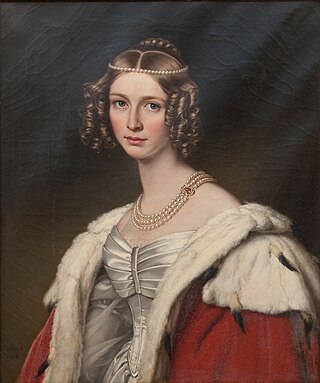
Théodolinde of Leuchtenberg, Countess of Württemberg by marriage, was a Franco-German princess. She was a granddaughter of Joséphine de Beauharnais, Napoleon's first wife.
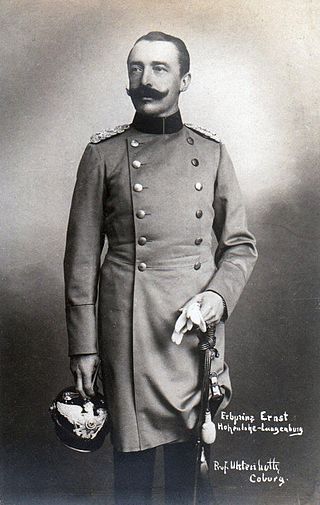
Ernst, 7th Prince of Hohenlohe-Langenburg was a German aristocrat and Prince of Hohenlohe-Langenburg. He served as the Regent of the Duchy of Saxe-Coburg and Gotha during the minority of his wife's cousin, Duke Charles Edward, from 1900 to 1905.

The House of Oettingen was a high-ranking noble Franconian and Swabian family. It ruled various estates that composed the County of Oettingen between the 12th century and the beginning of the 19th century. In 1674 the house was raised to the rank of prince for the first time. Despite the annexation of their lands following the German mediatisation of 1806, the family retained their titles and still have representatives today.
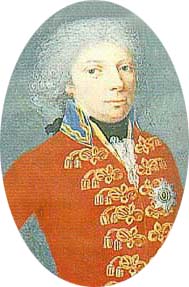
Duke William Frederick Philip of Württemberg was a prince of the House of Württemberg and a minister for war.
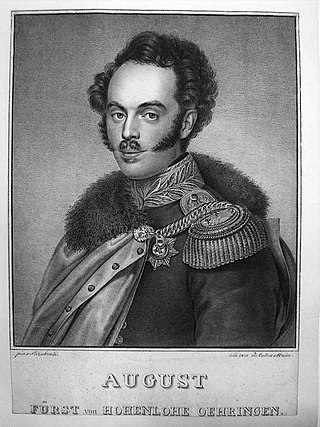
Frederick August Charles, Prince of Hohenlohe-Öhringen was a German general of the Napoleonic Wars and nobleman of the house of Hohenlohe.

The House Order of the Wendish Crown is a dynastic order that was jointly instituted on 12 May 1864 by Grand Duke Friedrich Franz II of Mecklenburg-Schwerin and Grand Duke Friedrich Wilhelm of Mecklenburg-Strelitz. It is the oldest and most senior order of the House of Mecklenburg.

The House of Urach is a morganatic cadet branch of the formerly royal House of Württemberg. Although the Württemberg dynasty was one of many reigning over small realms in Germany into the 20th century, and despite the fact that marital mésalliances in these dynasties usually disinherited the descendants thereof, the Dukes of Urach unusually managed to elicit consideration for candidacy for the thrones of several European states, viz. the Kingdom of Württemberg, the abortive Kingdom of Lithuania, the Principality of Monaco and even the Principality of Albania. Although none of these prospects came to fruition, they reflected monarchical attempts to accommodate the rapid shifts in national allegiance, regime and international alliances that intensified throughout the 19th century, leading up to and following Europe's Great War of 1914–1918.

The State Academy of Fine Arts Stuttgart is a public fine art university in Stuttgart, Germany. It was founded in 1761 and has been located on the Weissenhof since 1946. Its campus consists of three buildings: the Altbau, Neubau 1 or "Architects' Building", and Neubau 2.

Friedrich Wilhelm Eugen Karl Hugo, Prince of Hohenlohe-Öhringen, Duke of Ujest was a German nobleman, politician, mining industrialist and general in the armies of the kingdom of Württemberg and the kingdom of Prussia.





























